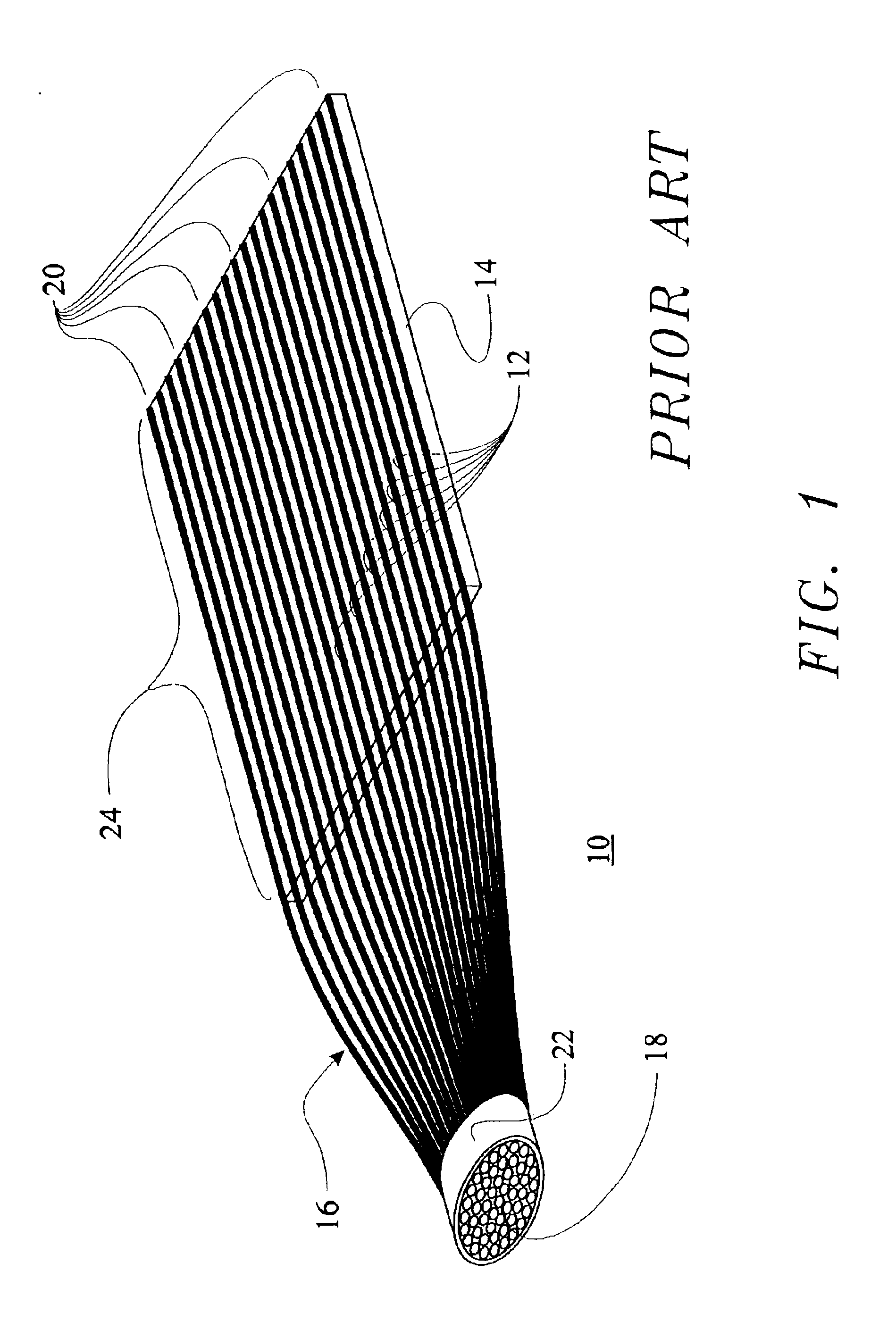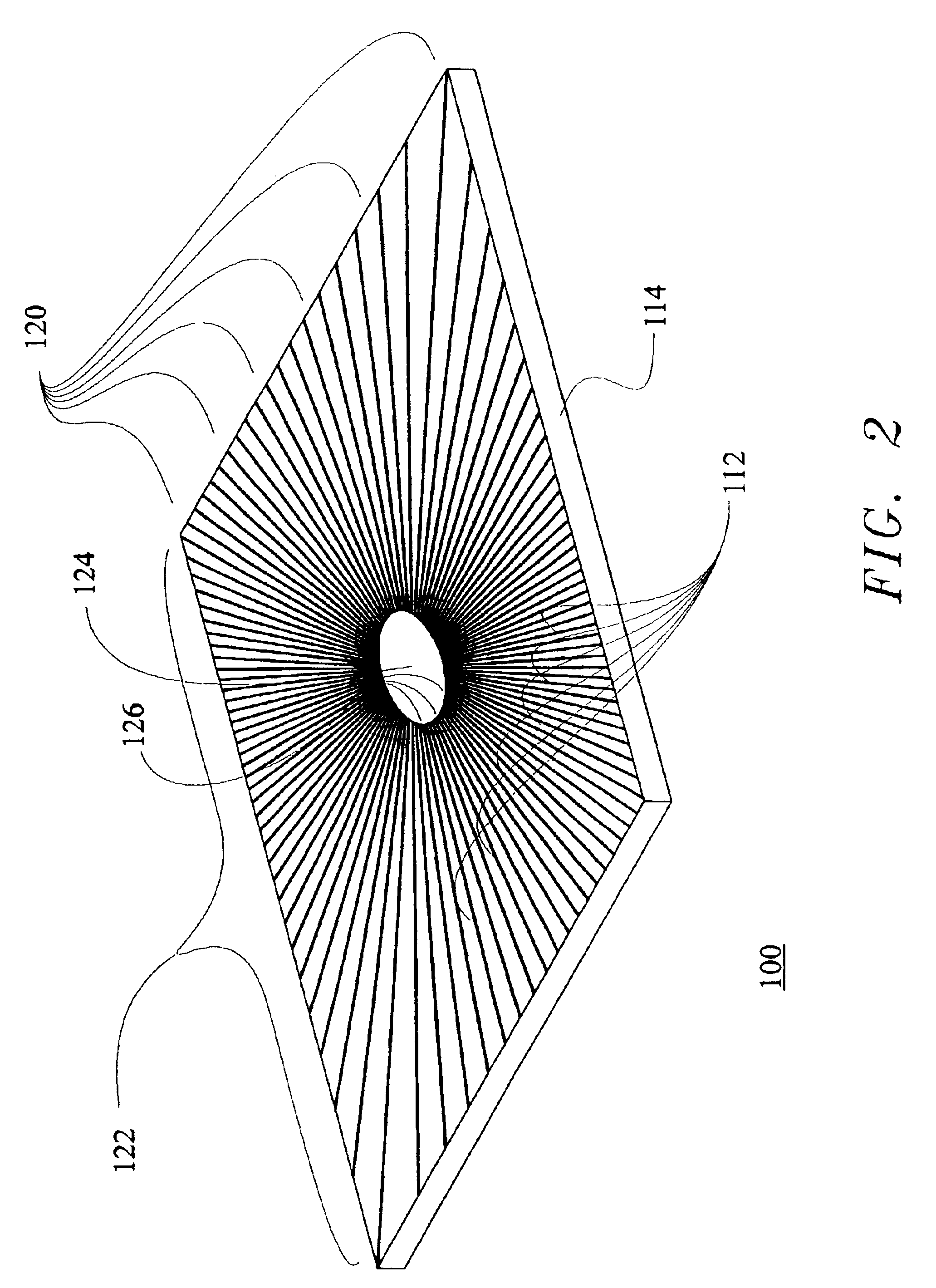Fiber optic lighting radial arrangement and method for forming the same
a technology of fiber optic strands and radial arrangement, which is applied in the direction of instruments, color-music instruments, rosaries, etc., can solve the problems of limited harrisons, limited apparatus, and inability to illuminate the entire surface area of materials
- Summary
- Abstract
- Description
- Claims
- Application Information
AI Technical Summary
Benefits of technology
Problems solved by technology
Method used
Image
Examples
first embodiment
[0072]FIG. 2 is an isometric view of the present invention; a radially arranged fiber optic panel 100 comprising a plurality of radially arranged fiber optic strands 112 positioned radially from at least one centralized illumination receiving position 124. The fiber optic strands 112 can be of any light transmissive fibers such as plastic optical fiber, glass optical fiber, and the like. The plurality of radially arranged fiber optic strands 112 comprise a first end being an illumination receiving port 126 and a second end being an illumination exiting port 120. The plurality of radially arranged fiber optic strands 112 are positioned with the centralized illumination receiving port 126 adjacent the at least one centralized illumination receiving position 124 and the illumination exiting port 120 positioned towards a peripheral edge 122 of a radially arranged fiber optic backing member 114. The plurality of radially arranged fiber optic strands 112 are adhered to said radially arran...
second embodiment
[0073]FIG. 3 is an isometric view of the present invention; an ornamental, radially arranged fiber optic panel 130 comprising a plurality of radially arranged fiber optic strands 112 positioned radially from at least one centralized illumination receiving position 124. The plurality of radially arranged fiber optic strands 112 are positioned with a centralized illumination receiving port 126 adjacent the at least one centralized illumination receiving position 124 and an illumination exiting port 120 positioned towards an ornamentally shaped, peripheral edge 132 of a radially arranged fiber optic backing member 114. The plurality of radially arranged fiber optic strands 112 are adhered to said radially arranged fiber optic backing member 114 and adjacent plurality of radially arranged fiber optic strands 112. The ends of the plurality of fiber optic strands 112 are sheared and polished at the illumination-sourcing end 126 of the plurality of fiber optic strands 112. The illumination...
PUM
| Property | Measurement | Unit |
|---|---|---|
| Angle | aaaaa | aaaaa |
| Color | aaaaa | aaaaa |
| Perimeter | aaaaa | aaaaa |
Abstract
Description
Claims
Application Information
 Login to View More
Login to View More - R&D
- Intellectual Property
- Life Sciences
- Materials
- Tech Scout
- Unparalleled Data Quality
- Higher Quality Content
- 60% Fewer Hallucinations
Browse by: Latest US Patents, China's latest patents, Technical Efficacy Thesaurus, Application Domain, Technology Topic, Popular Technical Reports.
© 2025 PatSnap. All rights reserved.Legal|Privacy policy|Modern Slavery Act Transparency Statement|Sitemap|About US| Contact US: help@patsnap.com



